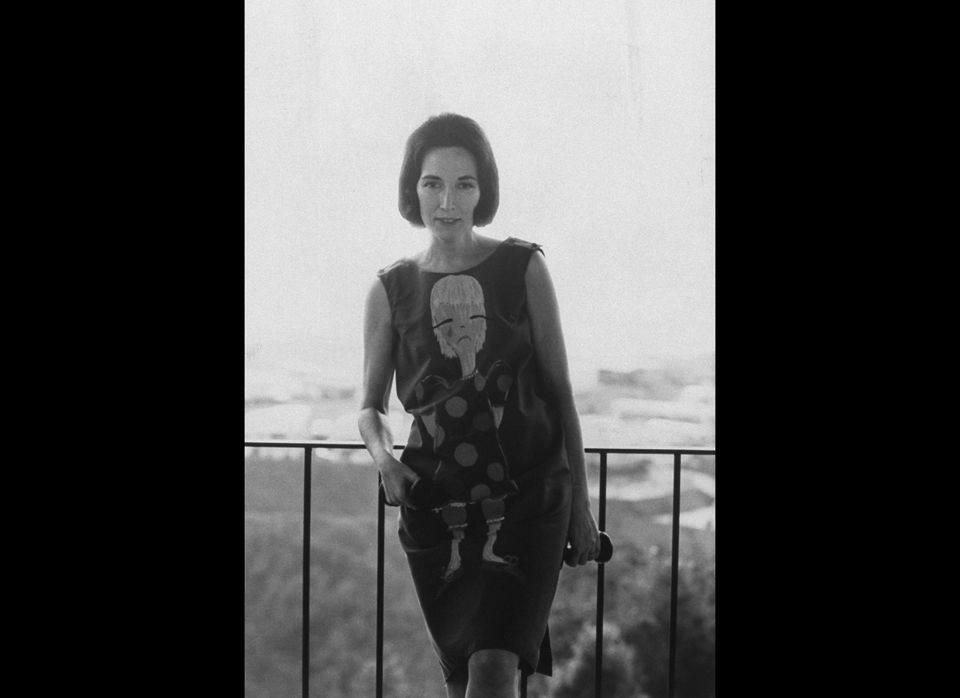If you didn't know who Helen Gurley Brown was, well...that's sad for you. But it is likely that you know her legacy, Cosmopolitan Magazine, from 40 paces -- even if you didn't want to admit to reading an issue. With its neon-bright covers bearing headlines promising the sexiest sex of all time, the mag had the recognizability factor of Time but the subtle shame of Playboy. To proclaim to be a "Cosmo girl" nowadays is to have the world look at you with a half-smirk and assume your literary knowledge is limited to romance novels. You're just that: A girl, not a woman.
But that wasn't always the case.
Helen Gurley Brown reinvented Cosmopolitan in 1965, taking it from an ailing literary magazine into a guide to being a modern-day woman. Though it never took a hard-line feminist approach (and was taken to task for that repeatedly), it could be argued that the emphasis on the "working woman" was decidedly pro-female. Unlike many magazines of the time, Cosmopolitan was the one place to find career advice, fashion that could work from office to an evening date and, well, frank talk about sex.
And, in 1972, a centerfold of Burt Reynolds.
But that's besides the point. Gurley Brown was a great editor not just because of her ability to put words on the page, but because she lived as she advised. She genuinely believed that all women could change their circumstances through a commitment to work, self and, well, love. And she believed it because she overcame meager circumstances through just those means.
She chronicled her rise from Little Rock, Arkansas (where her father died in an elevator accident) to a top-paid copywriter in the 1962 best-seller Sex And The Single Girl. Part-confessional, part-self-help guide, the book promised to transform the life of any woman who read it.
One of those women? Me.
I first came across the book during my freshman year of college, where I shelved books for a pittance in the university library. And by "shelved books" I mean: I spent a good portion of my hours reading whatever caught my eye. As I was making my way through the musty sociology section, I saw the tattered binding. When you're about 18, anything with the word "sex" in it will catch your eye, even if the source in question was an outdated book.
So I read. Though the book was about 40ish years old, the content was great. For one, I learned about scuttling--an alarming practice that occurred in certain offices in the 1940s, where a male superior would chase their female counterparts around and...pull off their panties. The casual way Gurley Brown wrote about such a ritual, the way one would refer to a mix-up at the soda machine, intrigued me.
I stole the book.
Aside from old-timey sexual harassment stories, the actual practical advice on how to take yourself from the middle-of-nowhere (or in my case, New Jersey, which is considered the "middle-of-nowhere" to Manhattanites) and to "somewhere" was the guidance I needed at the time. It wasn't magic, but was the promise that exceptionally hard work would eventually pay off. Her pillars of wisdom revolved around the belief that a career would be a savior, turning "mouseburgers" (her term for those who weren't the most popular or well-connected) into glamorous fully-formed women. By getting a toehold into the working world, you'd then devote yourself into advancement while studiously spending and saving. You'd get a sense of independence, which would attract a suitable partner. It was all a matter of will, you see, and she knew first-hand.
So when I'd read this fabulous book with its heartfelt advice, it would pain me to then glance over at the newsstand and see the magazine's current incarnation. (Gurley Brown stepped down from her editor position in 1997.) There wasn't much to any issue aside from lots of lists, quizzes and far-fetched stories of embarrassing moments. If you've read one issue, you've read them all, which is unfortunate.
During and after her Cosmopolitan years, Gurley Brown did her best to keep up with the new generation(s). She wore mini-skirts, spoke freely and continued to work. She still went out at night. And though she never had children, I'd like to think of all of us out there--whether you'd like to call us "mouseburgers" or just plain women in their 20s--are her successors.
She would be proud.
Helen Gurley Brown died on August 13, 2012. Click through the slideshow below to see her life in photos.
